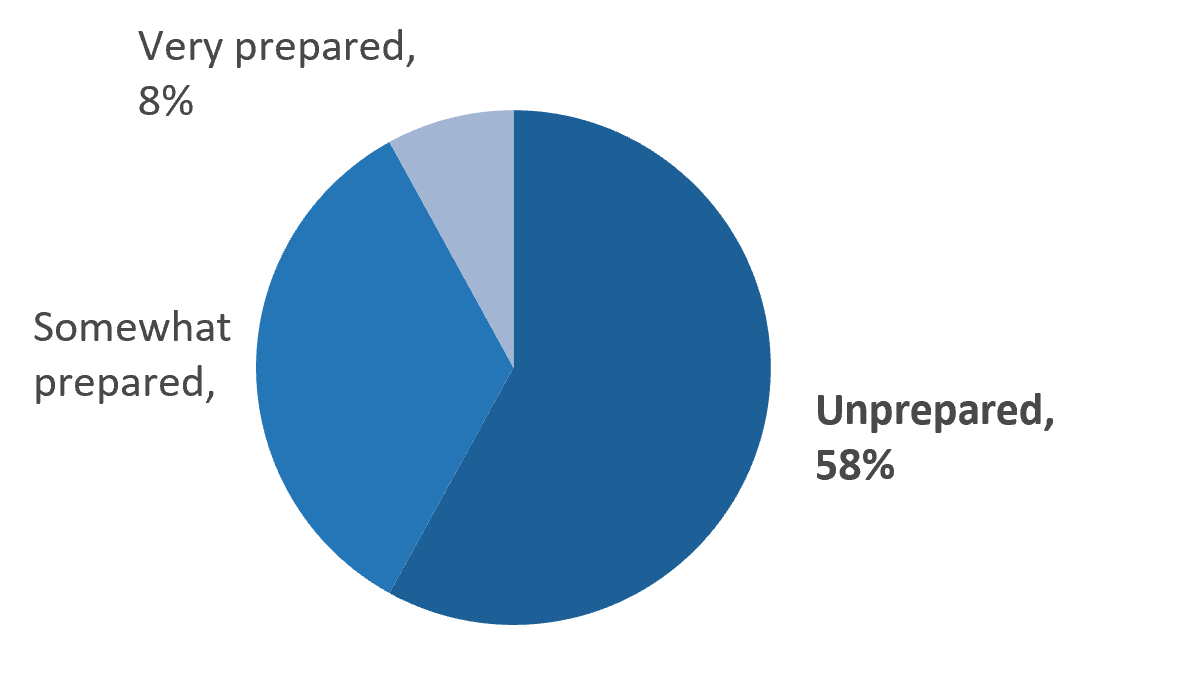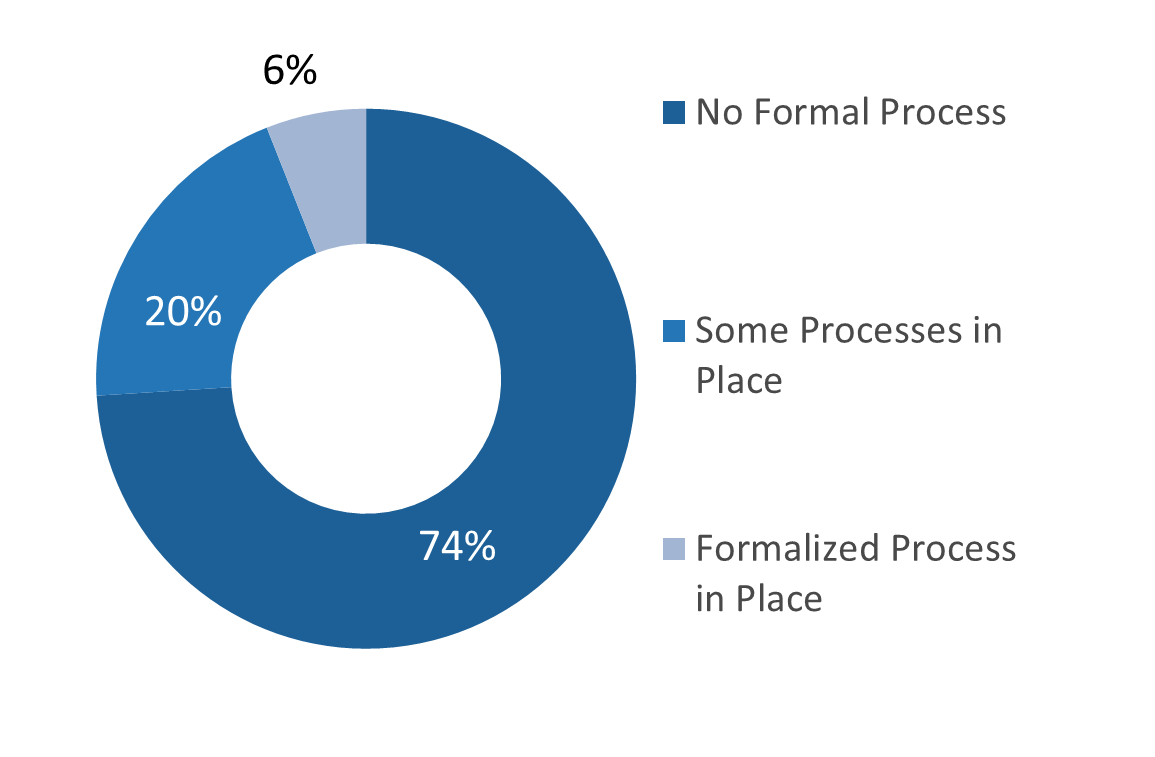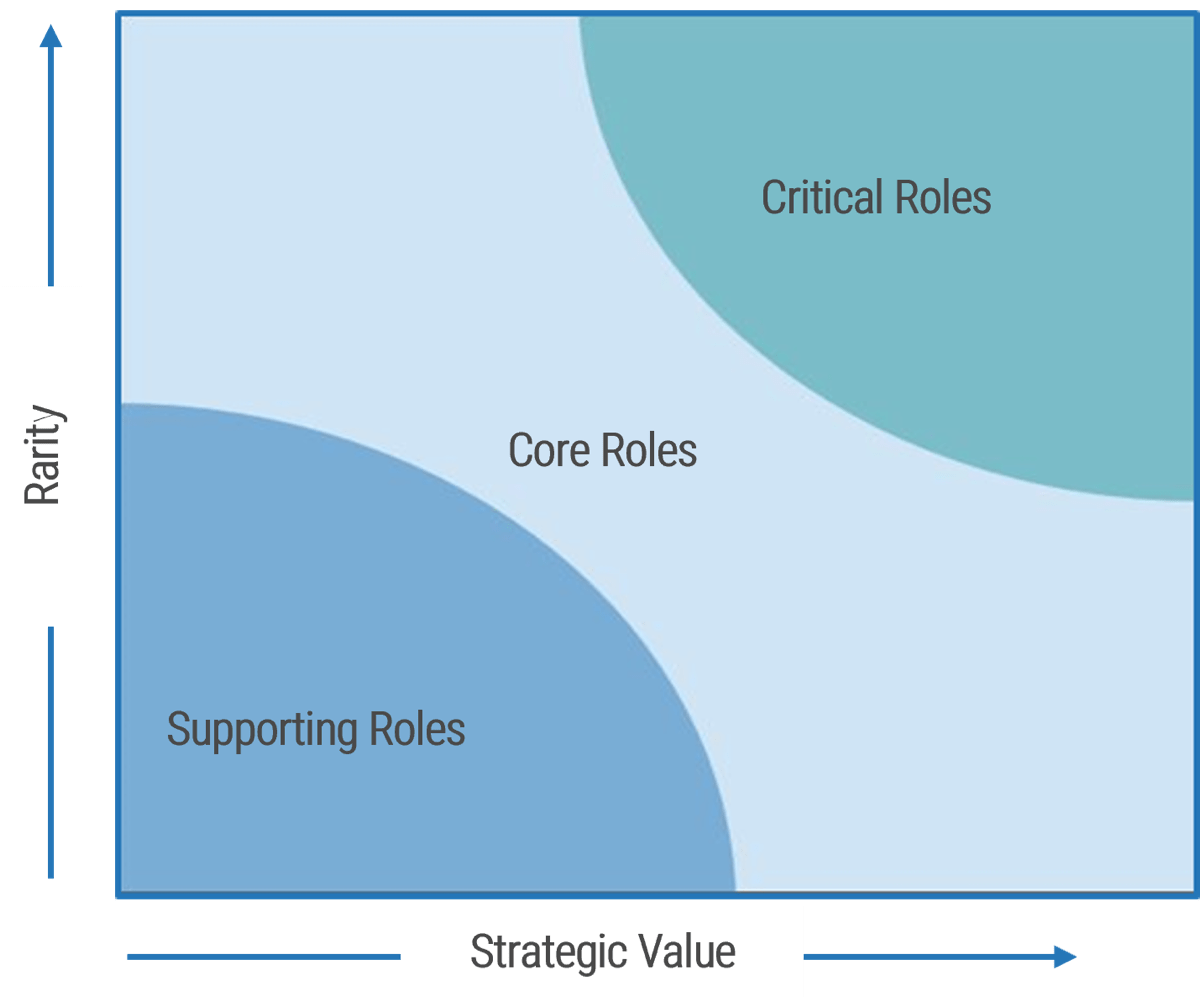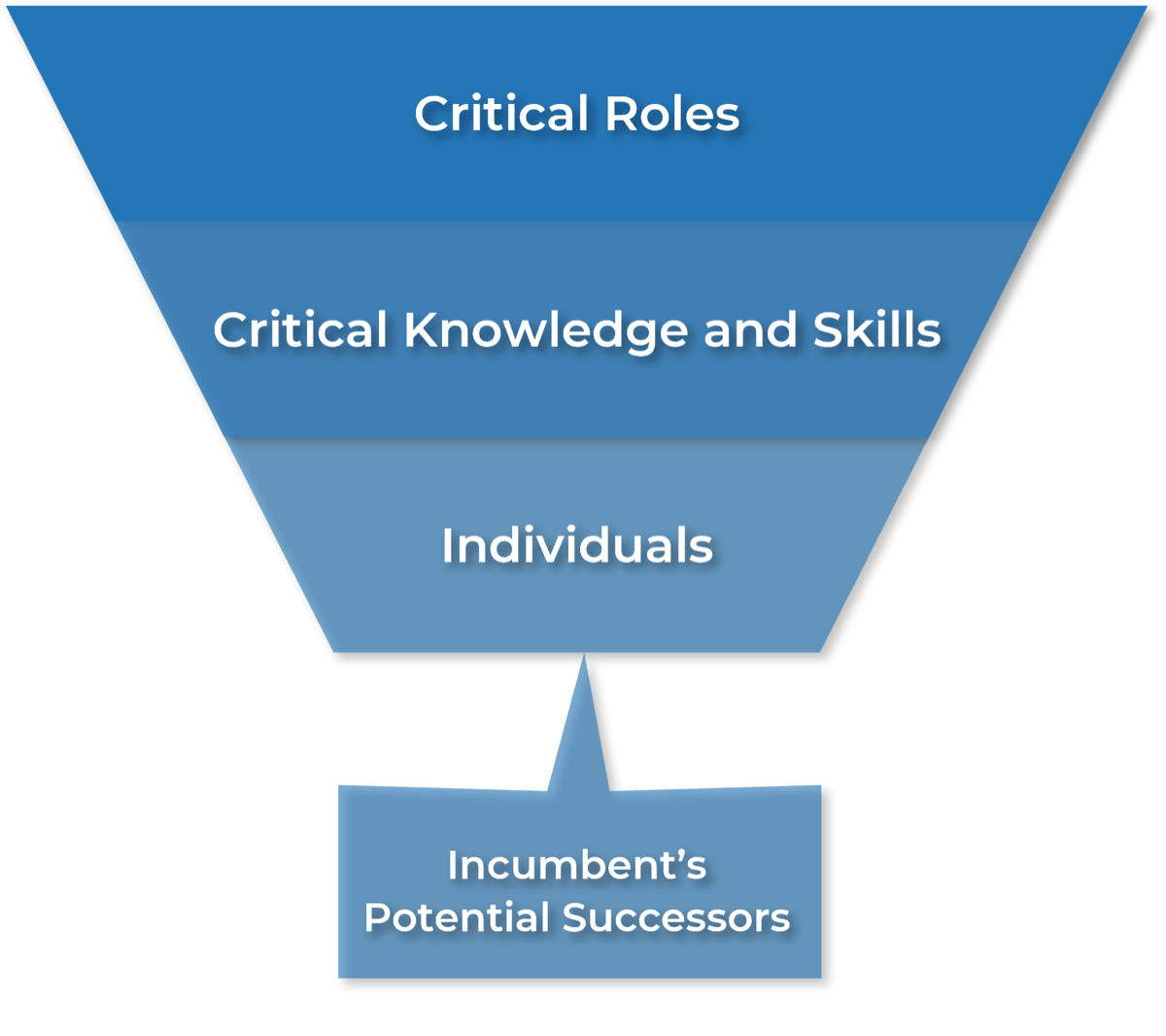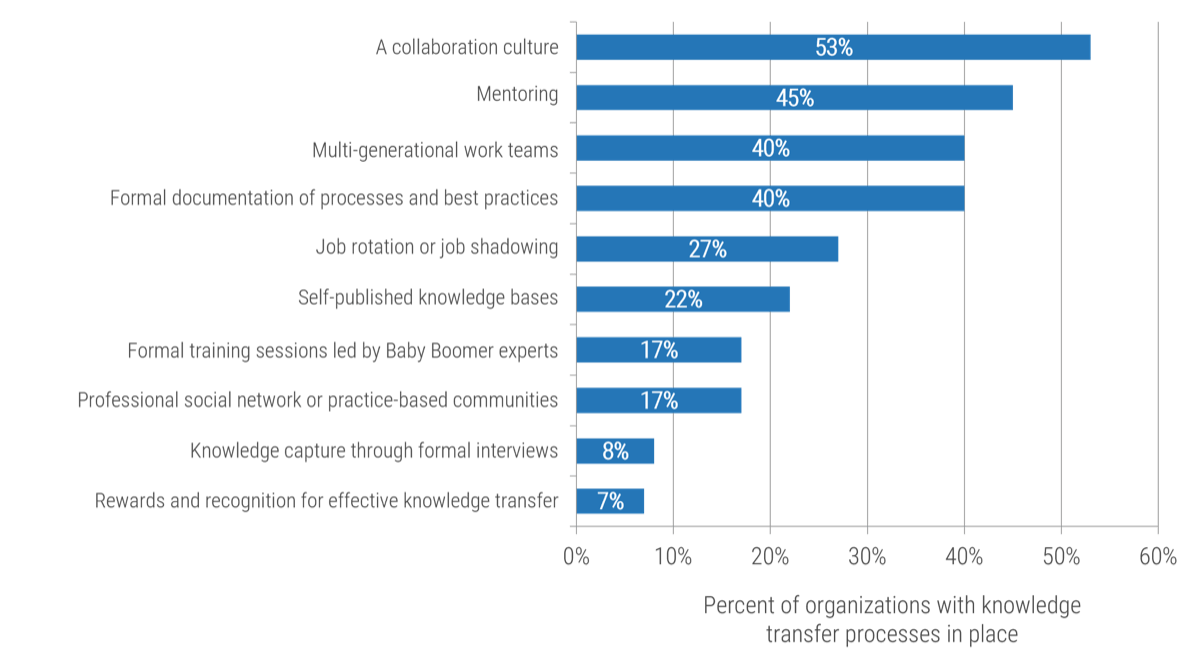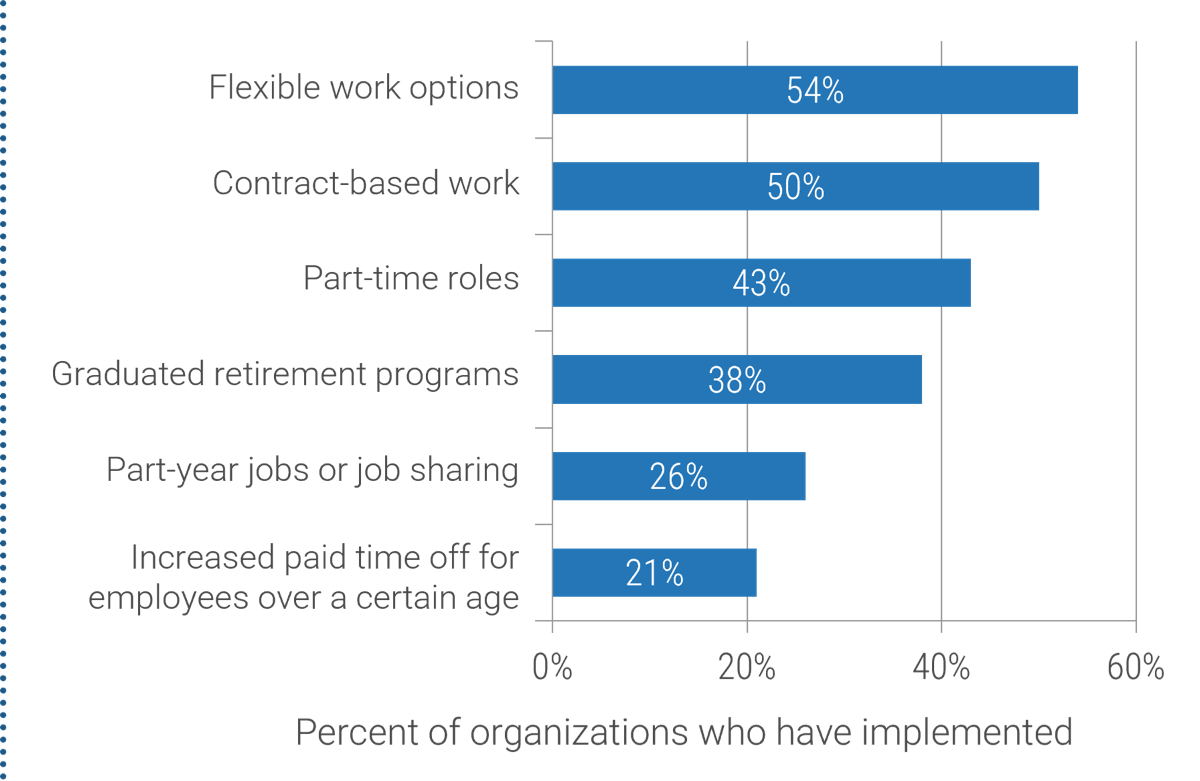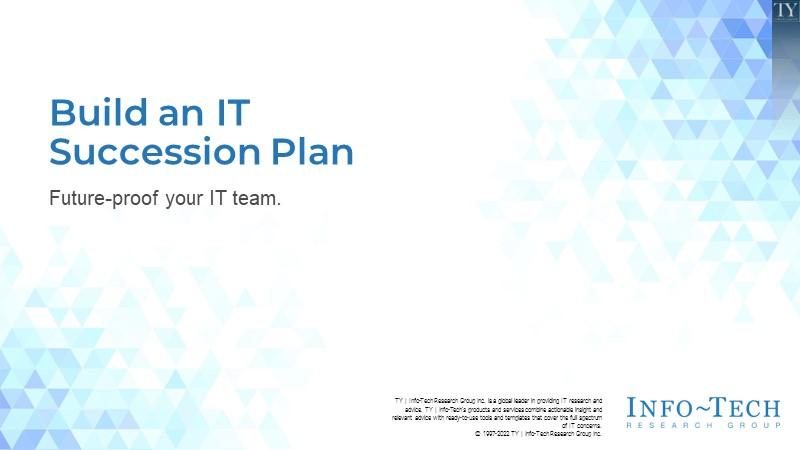
Build an IT Succession Plan
- Pending retirements in key roles create workforce risks and potentially impact business continuity.
- Fifty-six percent of organizations have not engaged in succession planning, so they haven’t identified at-risk key roles or successors for those roles.
Our Advice
Critical Insight
- Just under 60% of organizations haven't tackled succession planning.
- This means that three out of five organizations don’t know what skills they need for the future or what their key roles truly are. They also haven’t identified at-risk key roles or successors for those roles.
- In addition, 74% of organizations have no formal process for facilitating knowledge transfer between individuals, so knowledge will be lost.
Impact and Result
- Info-Tech's Key Roles Succession Planning Tool will help you assess key role incumbent risk factors as well as identify potential successors and their readiness. Pay particular attention to those employees in key roles that are nearing retirement, and flag them as high risk.
- Plan for the transfer of critical knowledge held by key role incumbents. Managers and HR leaders see significant tacit knowledge gaps in younger workers; prioritize tacit knowledge in your transfer plan and leverage multiple transfer methods.
- Explore alternative work arrangements to ensure sufficient time to prepare successors. A key role incumbent must be available to complete knowledge transfer.
- Define formal transition plans for all employees in at-risk key roles and their successors by leveraging your workforce and succession planning outputs, knowledge transfer strategy, and selected alternative work arrangements.
Build an IT Succession Plan Research & Tools
Besides the small introduction, subscribers and consulting clients within this management domain have access to:
1. Build an IT Succession Plan Deck – A step-by-step document that walks you through how to future-proof your IT team.
Protect your team and organization from losses associated with departure of people from key roles. This blueprint will help you build an IT succession plan to ensure critical knowledge doesn’t walk out the door and continuity of business when people in key roles leave.
- Build an IT Succession Plan Storyboard
2. Critical Role Identifier – A tool to help you determine which roles are most critical to the success of your team.
The purpose of this tool is to help facilitate a conversation around critical roles.
- Critical Role Identifier
3. Key Role Succession Planning Template – A tool that walks you through reviewing your talent, succession planning, and determining successor readiness.
This tool will help IT leaders work through key steps in succession development for each employee in the team, and present summaries of the findings for easy reference and defensibility.
- Key Roles Succession Planning Tool
4. Role Profile Template – A template that helps you outline the minimum requirements for each critical role addressed in succession planning.
This template is a guide and the categories can be customized to your organization.
- Role Profile Template
5. Individual Talent Profile Template – A template to assess an employee against the role profiles of critical roles.
This profile provides the basis for evidence-based comparison of talent in talent calibration sessions.
- Individual Talent Profile Template
6. Role Transition Plan Template – A template to help you plan to implement knowledge transfer and alternative work arrangements.
As one person exits a role and a successor takes over, a clear checklist-based plan will help ensure a smooth transition.
- Role Transition Plan Template
Further reading
INFO~TECH RESEARCH GROUP
Build an IT Succession Plan
Future-proof your IT team.
Build an IT Succession Plan
Future-proof your IT team.
EXECUTIVE BRIEF
Executive Summary
| Your Challenge
Most organizations are unprepared for the loss of employees who hold key roles.
Planning and executing on key role transition can take years. CIOs should prepare now to mitigate the risk of loss later. |
Common Obstacles
|
Info-Tech’s Approach
|
Info-Tech Insight
Losing employees in key roles without adequate preparation hinders productivity, knowledge retention, relationships, and opportunities. Implement scalable succession planning to mitigate the risks.
Most organizations are unprepared for the loss of employees who hold key roles
Due to the atmosphere of uncertainty.
Not only do they not have the right processes in place, but they are also ill-equipped to deal with the sheer volume of retirees in the future.
| Over 58% of organizations are unprepared for Baby Boomer retirement. Only 8% said they were very prepared.
A survey done by SHRM and AARP found similar results: 41% of HR professionals said their organizations have done nothing and don’t plan to do anything to prepare for a possible worker shortage as Boomers retire. (Source: Poll: Organizations Can Do More to Prepare for Talent Shortage as Boomers Retire) |
This means that three out of five organizations don’t know what skills they need for the future, or what their key roles truly are. They also have not identified at-risk key roles or successors for those roles.
(Source: McLean & Company, 2013, N=120) To make matters worse, 74% of organizations have no formal process for facilitating knowledge transfer between individuals, so knowledge will be lost.
|
Most organizations underestimate the costs associated with ignoring succession planning
| “In many cases, executives have no idea what knowledge they are losing.” (TLNT: Lost Knowledge – What Are You and Your Organization Doing About It?”) |
|
Use Info-Tech’s tools and templates
Talent Review |
Succession Planning |
Knowledge Transfer |
| Key tools and templates to help you complete your project deliverables | ||
| Key Roles Succession Planning Tool
Critical Role Identifier Role Profile Template Individual Talent Profile Template |
Key Roles Succession Planning Tool
Role Profile Template Individual Talent Profile Template |
Role Transition Plan Template
Key Roles Succession Planning Tool Role Profile Template Individual Talent Profile Template |
| Your completed project deliverables | ||
Critical Role Identifier Key Roles Succession Plan Key Role Profiles Individual Talent Profiles Key Role Transition Plans |
||
Ignoring succession planning could cause significant costs
Losing knowledge will undermine your strategy in four ways:
| Inefficiency
Inefficiency due to “reinvention of the wheel.” When workers leave and don’t effectively transfer their knowledge, duplication of effort to solve problems and find solutions occurs. |
Innovation
Reduced capacity to innovate. Older workers know what works and what doesn’t, what’s new and what’s not. They can identify the status quo faster to make way for novel thinking. |
Competitive Advantage
Loss of competitive advantage. Losing knowledge and/or established client relationships hurts your asset base and stifles growth. |
Vulnerability
Increased vulnerability. Losing knowledge can impede your organizational ability to identify, understand, and mitigate risks. You’ll have to learn through experience all over again. |
Succession planning improves performance by reducing the impact of sudden departures
| Business Continuity
Succession planning limits disruption to daily operations and minimizes recruitment costs:
|
Engagement & Retention
Effective succession planning is a tool for engaging, developing, and retaining employees:
|
Innovation & Growth
Knowledge is a strategic asset, and succession planning can help retain, grow, and capitalize on it:
|
Info-Tech’s approach
| Talent Review
Conduct a talent review to identify key roles  |
Succession Planning
Succession planning helps you assess which key roles are most at risk  |
Knowledge Transfer
Utilize methods that make it easy to apply the knowledge in day-to-day practice.  |
|||||
| Identify Critical Roles | Assess Talent | Identify Successors | Develop Successors | Select Successors | Identify Critical Knowledge | Select Transfer Methods | Document Role Transition Plans |
| Future-Proofed IT Team | |
|
|
Info-Tech’s methodology for building an IT succession plan
| 1. Talent Review | 2. Succession Planning | 3. Knowledge Transfer | |
| Phase Steps |
|
|
|
| Phase Outcomes |
|
|
|
Info-Tech offers various levels of support to best suit your needs
DIY Toolkit |
Guided Implementation |
Workshop |
Consulting |
| "Our team has already made this critical project a priority, and we have the time and capability, but some guidance along the way would be helpful." | "Our team knows that we need to fix a process, but we need assistance to determine where to focus. Some check-ins along the way would help keep us on track." | "We need to hit the ground running and get this project kicked off immediately. Our team has the ability to take this over once we get a framework and strategy in place." | "Our team does not have the time or the knowledge to take this project on. We need assistance through the entirety of this project." |
Diagnostics and consistent frameworks used throughout all four options |
|||
Guided Implementation
A Guided Implementation (GI) is a series of calls with an Info-Tech analyst to help implement our best practices in your organization.
A typical GI is six to ten calls over the course of four to eight months.
What does a typical GI on this topic look like?
Phase 1 |
Phase 2 |
Phase 3 |
||
| Call #1: Scope requirements, objectives, and your specific challenges. | Call #2:Review business priorities and clarify criteria weighting.
Call #3: Review key role criteria. Explain information collection process. |
Call #4: Review risk and readiness assessments.
Call #5: Analyze gaps between key roles and successors for key considerations. |
Call #6: Feedback and recommendations on critical knowledge risks.
Call #7: Review selected transfer methods. |
Call #8: Analyze role transition plans for flags. |
Build an IT Succession Plan
Phase 1
Talent Review
| Phase 1
1.1 Identify Critical Roles 1.2 Assess Talent |
Phase 2
2.1 Identify Successors 2.2 Develop Successors 2.3 Select Successors |
Phase 3
3.1 Identify Critical Knowledge 3.2 Select Transfer Methods 3.3 Document Role Transition Plan |
This phase will walk you through:
- Identifying your business priorities
- Identifying your critical roles including required skills and knowledge that support achievement of business strategy
Tools and resources used:
- Key Roles Succession Planning Tool
- Key Role Profile
- Individual Talent Profile
- Critical Role Identifier
This phase involves the following participants:
- IT leadership/management team
- HR
Conduct a talent review to identify key roles
Sixty percent of organizations have not engaged in formal workforce planning, so they don’t know what skills they need or what their key roles truly are. (Source: McLean & Company, 2013; N=139)- A talent review ensures that each work unit has the right people, in the right place, at the right time to successfully execute the business strategy.
- Only 40% of organizations have engaged in some form of workforce planning.
- The first step is to identify your business focus; with this information you can start to note the key roles that drive your business strategy.
Key roles
Where an organization’s most valued skills and knowledge reside
| Organizations should prepare now to mitigate the risk of loss later. Key roles are:
Info-Tech InsightLosing employees in key roles without adequate preparation for their departure has a direct impact on the bottom line in terms of disrupted productivity, lost knowledge, severed relationships, and missed opportunities. | 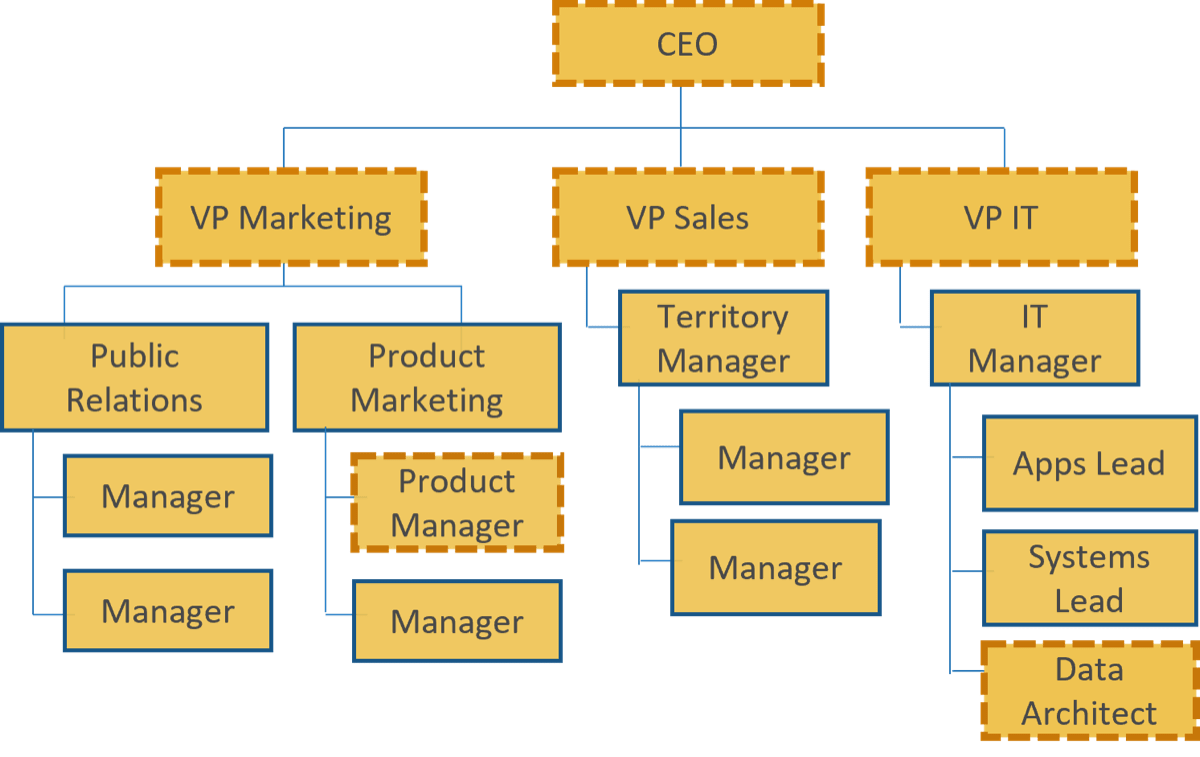 Identifying key roles is the first step in a range of workforce management activities because it helps establish organizational needs and priorities, as well as focusing planning effort. |
A talent review allows you to identify the knowledge and skills you need today and for the long term.Knowing what you need is the first step in determining what you have and what you need to keep.
CautionA talent review is a high-level planning process which does not take individual employees into consideration. Succession planning looks at individuals and will be discussed in Phase 2. |
A talent review gets you to think in terms of:
Note: Planning against a time frame longer than five years is difficult because uncertainty in the external business environment will have unforeseen effects. Revisit your plan annually and update it, considering changes. |
Step 1.1
Identify critical roles
Activities
- 1.1.1 Document Business Priorities, Goals, and Challenges
- 1.1.2 Clarify Key Role Criteria and Weighting
- 1.1.3 Evaluate Role Importance
- 1.1.4 Key Role Selection and Comparison
- 1.1.5 Capture Key Elements of Critical Roles
The primary goal of this step is to ensure we have effectively identified key roles based on business priorities, goals, and challenges, and to capture the key elements of critical roles.
Outcomes of this step
- Documented business priorities, goals, and challenges.
- Key elements of critical roles captured.
- Key role criteria and weighting.
| Step 1.1 | Step 1.2 |
Business priorities will determine the knowledge and skills you value most
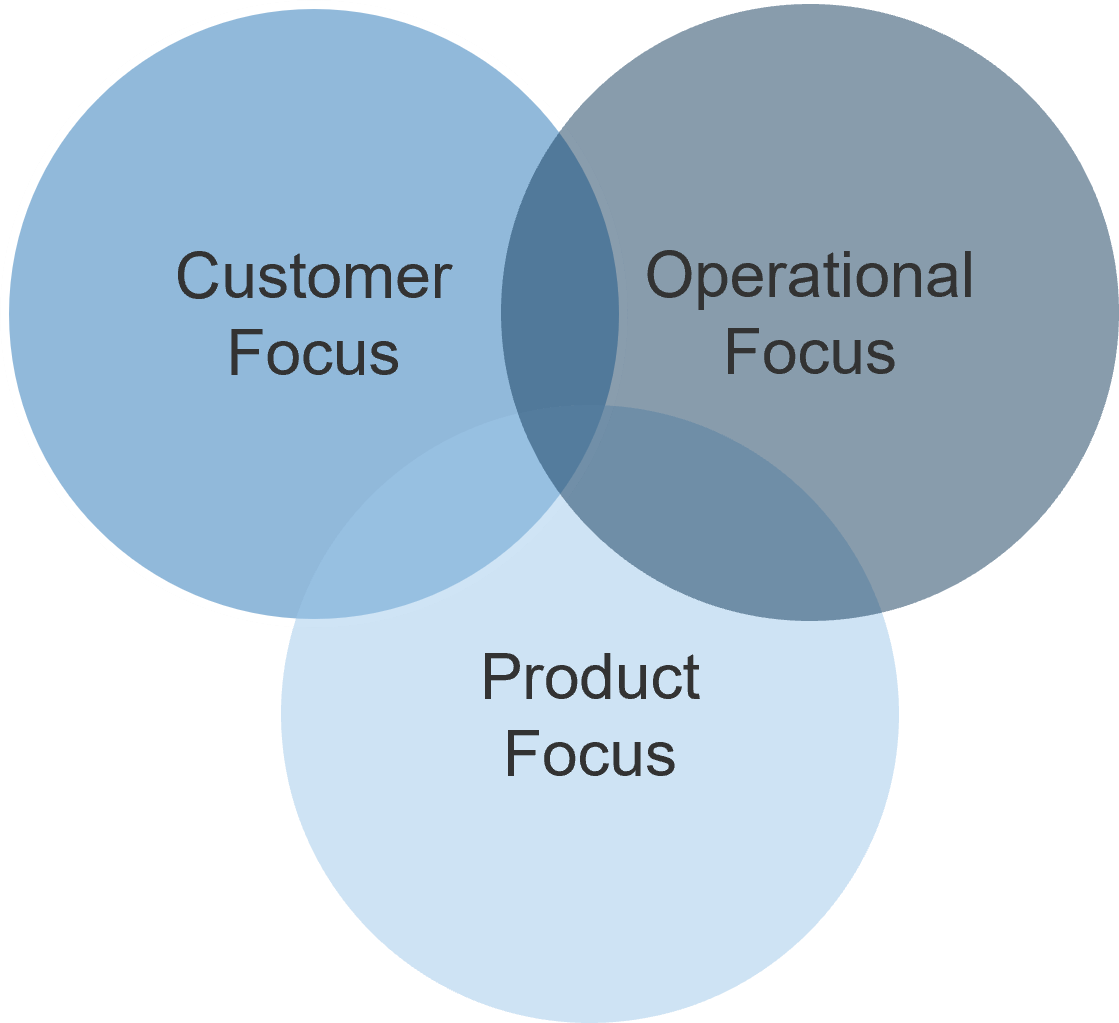
Note: Most organizations will be a blend of all three, with one predominating |
“I’ve been in the position where the business assumes everyone knows what is required. It’s not until you get people into a room that it becomes clear there is misalignment. It all seems very intuitive but in a lot of cases they haven’t made the critical distinctions regarding what exactly the competencies are. They haven’t spent the time figuring out what they know.” (Anne Roberts, Principal, Leadership Within Inc.) |
1.1.1 Document business priorities
Input: Business strategic plan
Output: Completed workforce planning worksheet (Tab 2) of the Key Roles Succession Planning Tool
Materials: Key Roles Succession Planning Tool
Participants: IT leadership
Start by identifying your business priorities based on your strategic plan. The goal of this exercise is to blast away assumptions and make sure leadership has a common understanding of your target.
With the questions on the previous slide in mind document your business priorities, business goals, and business challenges in Tab 2 of the Key Roles Succession Planning Tool worksheet.
Get clear answers to these questions:
- Are we customer focused, product focused, or operationally focused? In other words, is your organization known for:
- Great customer service or a great customer experience?
- The lowest price?
- Having the latest technology, or the best quality product?
- What are our organizational/departmental business goals? To improve operational effectiveness, are we really talking about reducing operational costs?
- What are the key business challenges to address within the context of our focus?
Clarify what defines a key role
A key role is crucial to achieving organizational objectives, drives business performance, and includes specialized and rare competencies. Key roles are high in strategic value and rarity – for example, the developer role for a tech company.
|
Info-tech insightTraditionally, succession planning has only addressed top management roles. However, until you look at the evidence, you won’t know if these are indeed high-value roles, and you may be missing other critical roles further down the hierarchy. Use the Critical Role Identifier to facilitate the identification of critical roles with your leaders. |
1.1.2 Clarify key role criteria & weighting
Input: Business strategic plan
Output: Weighted criteria to help identify critical roles
Materials: Critical Role Identifier
Participants: IT leadership
- Using Tab 2 of the Critical Role Identifier tool, along with the information on the previous slide, determine the relative importance of four criteria as contributing to the importance of a role within the organization.
- Rate each of the four criteria: strategic value, rarity, revenue generation, business/operation continuity, and any custom criteria numerically. You might choose only one or two criteria – they all do not need to be included.
- Document your decisions in Tab 2 of the Critical Role Identifier.
1.1.3 Evaluate role importance
Input: List of IT roles
Output: Full list of roles and a populated Critical Role Selection sheet (Tab 4)
Materials: Critical Role Identifier
Participants: IT leadership
- Using Tab 3 of the Critical Role Identifier, collect information about IT roles.
- Start by listing each role under consideration, and its department or subcategory.
- For each criteria statement listed across the top of the sheet, select an option from the drop-down menu to reflect the appropriate answer scale rating. Replace the text in grey with information customized to your team. If criteria has a weighting of zero in Tab 2, the questions associated with that criteria will be greyed out and do not have to be answered.
Identify the key roles that support and drive your business priorities
| Focus on key IT roles instead of all roles to save time and concentrate effort on your highest risk areas.
Key Roles include:
|
Ask these questions to identify key roles:
|
1.1.4 Key role selection and comparison
Input: Tab 3 of the Critical Role Identifier
Output: List of roles from highest to lowest criticality score, List of key roles entered in Tab 2 of the Key Roles Succession Planning Tool
Materials: Critical Role Identifier, Key Roles Succession Planning Tool
Participants: IT leadership
- Using tab 4 of the Critical Role Identifier, which displays the results of the role importance evaluation, review the weighted criticality score. To add or remove roles or departments make changes on Tab 3.
- Use this table to see the scores and roles from highest to lowest based on your weightings and scoring.
- In column J, classify the roles as critical, core, or supporting based on the weighted overall score and the individual criteria scores.
- Critical – is crucial to achieving organizational objectives, drives business performance, and includes specialized and rare skills.
- Core – is related to operational excellence. Highly strategically valuable but easy to find or develop.
- Supporting – is important in keeping business functioning; however, the strategic value is low. Competencies are easy to develop.
- Once you’ve selected the key roles, transfer them into Tab 2 of the Key Roles Succession Planning Tool worksheet where you have documented your business priorities.
1.1.5 Capture key elements of critical roles
Input: Job descriptions, Success profiles, Competency profiles
Output: List of required skills and knowledge for key roles, Role profiles documented for key roles
Materials: Key Roles Succession Planning Tool, Role Profile Template
Participants: IT leadership
- Document the minimum requirements for critical roles in column E and F of Tab 2 of the Key Roles Succession Planning Tool. Include elements that drive talent decisions, are measurable, and are oriented to future organizational needs.
- Consider how leadership competencies and technical skills tie to business expansion plans, new service offerings, etc.
- Use the Role Profile Template to help in this process and to maintain up-to-date information.
- Role profiles may be informed by existing job descriptions, success profiles, or competency profiles.
- Conduct regular maintenance on your role profiles. Outdated and inaccurate role-related information can make succession planning efforts ineffective.
Case StudyConduct a “sanity check” by walking through a checklist of all roles to ensure you haven’t missed anything. |
INDUSTRY |
SOURCE |
Challenge
|
Solution
|
Results
|
Step 1.2
Assess talent
Activities
- 1.2.1 Identify Current Incumbents’ Information
- 1.2.2 Identify Potential Successors and Collect Information
The primary goal of this step is to assess departmental talent and identify gaps between potential successors and key roles. This analysis is intended to support departmental access to suitable talent ensuring future business success.
Outcomes of this step
- Collection of current incumbents’ information.
- Collection of potential successor information.
- Gap assessment.
Talent Review
| Step 1.1 | Step 1.2 |
Find out key role incumbents’ career plansHave career discussions with key role incumbents
|
Do the following:
|
Potential questions to ask during career discussions with key role incumbents
|
 |
1.2.1 Identify current incumbents' information
Input: Key roles list, Employee information
Output: List of key roles with individual incumbent information
Materials: Key Roles Succession Planning Tool – Succession Plan Worksheet (Tab 3)
Participants: IT leadership/management team, HR, Current incumbents if necessary
Identify current incumbents for all key roles and collect information about them.
Using Tab 3 of the Key Roles Succession Planning Tool identify the incumbent (the person currently in the role) for all key roles.
Distribute the worksheet to department managers and team leaders to complete the information below for each key role.
For that incumbent, also document:
- Their time in that role.
- Their overall performance in current role (does not meet, meets, or exceeds expectations).
- Next step in career (target role or retirement).
- Time until exit from the current role (known or estimated).
- Development needs for next step in career.
- Any additional knowledge and skills they possess beyond the role description that is of value to the organization.
Upon completion, managers and team leaders should review the results with the department leader.
Identify potential successors for all key roles
It’s imperative that multiple sources of information are used to ensure no potential successor is missed and to gain a complete candidate picture.Work collaboratively with the management team and HR business partners for names of potential successors. The management team includes:
Use management roundtable discussions to identify and analyze each potential successor.
|
Don’t confuse successors with high potentials!
|
Determine how employees will be identified for talent assessment
| Description | Advice | |
| Management-nominated employees |
|
|
| High-potential employees (HiPos) |
|
|
| Self-nominated employees |
|
|
| All employees |
|
|
| When identifying employees, keep the following advice in mind: | |
Widen the netDon’t limit yourself to the next level down or the same functional group. |
Match transparencyWith less transparency, there are fewer options, and you risk missing out on potential successors. |
Select the appropriate talent assessment methodsIdentify all talent assessment types used in your organization and examine their ability to inform decision-making for critical role assignments. Select multiple sources to ensure a robust talent assessment approach: A sound talent assessment methodology will involve both quantitative and qualitative components. Multiple data inputs and perspectives will help ensure relevant information is prioritized and suitable candidates aren’t overlooked. However, beware that too many inputs may slow down the process and frustrate managers. Beware of biases in talent assessments. A common tendency is for people to recommend successors who are exactly like them or who they like personally, not necessarily the best person for the job. HR must (diplomatically) challenge leaders to use evidence-based assessments. |
Good Successor Information Sources
|
Prepare to customize the Individual Talent Profile Template
| Ensure the role profile and individual talent profile are synchronized to enable comparing employee qualifications and readiness to critical role requirements. | 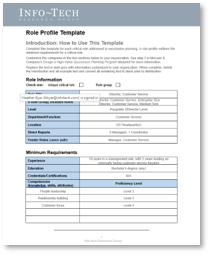
Role ProfileA role profile contains information on the skills, competencies, and other minimum requirements for the critical role. It details the type of incumbent that would fit a critical role. |
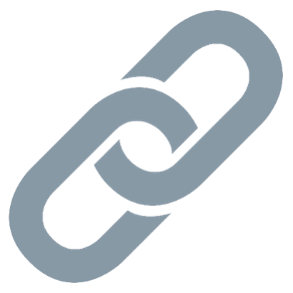
Use both in conjunction during:
|
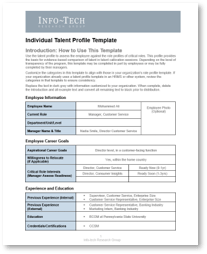
Individual Talent ProfileA talent profile provides information about a person. In addition to responding to role profile criteria, it provides information on an employee’s past experiences and performance, career aspirations, and future potential. |
1.2.2 Identify Potential Successors’ Information
Input: Key roles list, Employee information, Completed role profiles and/or Tab 2 role information.
Output: List of potential successors for key roles that are selected for talent assessment
Materials: Key Roles Succession Planning Tool – Succession Plan Worksheet (Tab 3)
Participants: IT leadership, IT team leads, Employees
Identify potential successors for key roles and collect critical information.
Have managers and team leads complete column I on Tab 3 of the Key Roles Succession Planning Tool and review with the department leader.
There may be more than one potential successor for key roles; this is okay.
Once the list is compiled, complete an individual talent profile for each potential successor. Record an employee’s:
- Employee information
- Career goals
- Experience and education
- Achievements
- Competencies
- Performance
- Any assessment results
Once the profiles are completed, they can be compared to the role profile to identify development needs.
Build an IT Succession Plan
Phase 2
Succession Planning
| Phase 1 1.1 Identify Critical Roles 1.2 Assess Talent | Phase 2 2.1 Identify Successors 2.2 Develop Successors 2.3 Select Successors | Phase 3 3.1 Identify Critical Knowledge 3.2 Select Transfer Methods 3.3 Document Role Transition Plan |
This phase will walk you through how to:
- Conduct an assessment to identify “at risk” key role incumbents.
- Identify potential successors for key roles and collect critical information.
- Assess gaps between key role incumbents and potential successors.
Tools and resources used:
- Key Roles Succession Planning Tool
- Key Role Profile
- Individual Talent Profile
This phase involves the following participants:
- IT leadership/management team
- HR
Succession planning helps you assess which key roles are most at risk
| Drilling down to the incumbent and successor level introduces “real life,” individual-focused factors that have a major impact on role-related risk.
Succession planning is an organizational process for identifying and developing talent internally to fill key business roles. It allows organizations to:
Caution:Where the talent review was about high-level strategic planning for talent requirements, succession planning looks at individual employees and plans for which employees will fulfill which key roles next. |
“I ask the questions, What are the risks we have with these particular roles? Is there a way to disperse this knowledge to other members of the group? If yes, then how do we do that?” (Director of HR, Service Industry) |
Succession planning ultimately must drill down to individual people – namely, the incumbent and potential successors. This is because individual human beings possess a unique knowledge and skill set, along with their own personal aspirations and life circumstances. The risks associated with a key role are theoretical. When people are introduced into the equation, the “real life” risk of loss for that key role can change dramatically. | Succession Planning |
Step 2.1
Identify Successors
Activities
- 2.1.1 Conduct Individual Risk Assessment
- 2.1.2 Successor Readiness Assessment
This step highlights the relative positioning of all employees assessed for departure risk compared to the potential successors’ readiness, identifying gaps that create risk for the organization, and need mitigation strategies.
Outcomes of this step
- Individual risk assessment results – mitigate, manage, accept matrix.
- Potential successor readiness ranking.
- Determination on transparency level with successors.
Succession Planning
| Step 2.1 | Step 2.2 | Step 2.3 |
Decide how to obtain information on employee interest in critical roles
Not all employees may want to be considered as part of the succession planning program. It might not fit their short- or long-term plans. Avoid misalignment and outline steps to ascertain employee interest.
Transparency
Timing
Manager accountability and resources
|
Obtaining employee interest ensures process efficiency because:
Level-set expectations with employees:
|
Conduct a risk assessmentIdentify key role incumbents who may leave before you’re ready.Pay particular attention to those employees nearing retirement and flag them as high risk.
|
Pull some hard demographic data.
Compile a report that breaks down employees into age-based demographic groups. Flag those over the age of 50 – they’re in the “retirement zone” and could decide to leave at any time. Check to see which key role incumbents fall into the “over 50” age demographic. You’ll want to shortlist these people for an individual risk assessment. Update this report twice a year to keep it current. For those people on your shortlist, gather the information that supervisors gained from the career discussions that took place. Specifically, draw out information that indicates their retirement plans. |
2.1.1 Conduct Individual Risk Assessment
Input: Completed Succession Plan worksheet
Output: Risk assessment of key role incumbents, understanding of which key role departures to manage, mitigate, and accept
Materials: Key Roles Succession Planning Tool – Individual Risk Assessment (Tab 4), Key Roles Succession Planning Tool – Risk Assessment Results (Tab 5)
Participants: IT leadership/management team
Assign values for probability of departure and impact of departure using the Key Roles Succession Planning Tool.
For those in key roles and those over 50, complete the Individual Risk Assessment (Tab 4) of the Key Roles Succession Planning Tool:
- Assess each key role incumbent’s probability of departure based on your knowledge. If the person is going to another job, is a known flight risk, or faces dismissal, the probability is high.
- 0-40: Unlikely to Leave. If the employee is new to the role, highly engaged, or a high potential.
- 41-60: Unknown. If the employee is sending mixed messages about happiness at work, or sending no messages, it may be difficult to guess.
- 61-100: Likely to Leave. If the employee is nearing retirement, actively job searching, disengaged, or faces dismissal, then the probability of departure is high.
- Assess the role and the individual’s impact of departure on a scale of 1 (no impact) to 100 (devasting impact).
- Review the risk assessment results on tab 5 of the planning tool. The employees that appear in the mitigate quadrant are your succession planning priorities.
Define readiness criteria for successor identification
- Select the types of readiness and the number of levels:
Readiness by time horizon:
- Successors are identified as ready based on how long it is estimated they will take to acquire the minimum requirements of the critical role.
- Levels example: Ready Now, Ready in 1-2 Years, Ready in 3-5 Years.
Readiness by moves:
- Successors are identified as ready based on how many position moves they have made or how many developmental experiences they have had.
- Levels example: Ready Now, Ready after 1 Move, Ready after 2 Moves.
- Create definitions for each readiness level:
Example: Performance
Potential
Ready Now Definition: Ability to deliver in current role Requirement: Meets or exceeds expectations Definition: Ability to take on greater responsibility Requirement: Demonstrates learning agility The 9-box is an effective way to map performance and potential requirements and can guide management decision making in talent review and calibration sessions. See McLean & Company’s 9-Box Job Aid for more information. 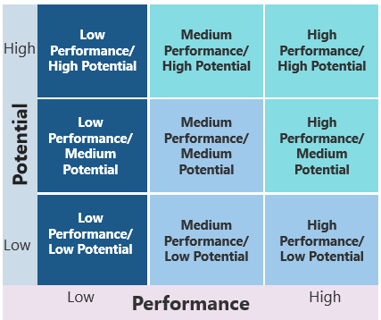
“Time means nothing. If you say someone will be ready in a year, and you’ve done nothing in that year to develop them, they won’t be ready. We look at it as moves or experiences: ready now, ready in one move, ready in two moves.” (Amanda Mathieson, Senior Manager, Talent Management, Tangerine)
2.1.2 Successor Readiness Assessment
Input: Individual talent profiles, List of potential successors (Tab 3)
Output: Readiness ranking for each potential successor
Materials: Key Roles Succession Planning Tool
Participants: IT leadership/management team
Assign values for probability of departure and impact of departure using the Key Roles Succession Planning Tool.
Using Tab 6 of the Key Roles Succession Planning Tool, evaluate the readiness of each potential successor that you previously identified.
- Enter the name, current role, and target role of each potential successor into the spreadsheet.
- For each employee, fill in a response from “strongly agree” to “strongly disagree” for the assessment criteria statements listed in column B of Tab 6. This will give you a readiness ranking in row 68.
Decide if and how successors will be told about their status in the succession plan
|
|
Case StudyFailing to have a career aspiration discussion with a potential successor leaves a sales director in a bind. | INDUSTRY | SOURCE |
Challenge
|
Solution
|
Results
|
Step 2.2
Develop Successors
Activities
- 2.2.1 Outline Successor Development Process
The primary goal of this step is to identify the steps that need to be taken to develop potential successors. Focus on training employees for their future role, not just their current one.
Outcomes of this step
- Identified gaps between key role exits and successor readiness.
Succession Planning
| Step 2.1 | Step 2.2 | Step 2.3 |
2.2.1 Outline Successor Development Process
Input: Role profiles, Talent profiles, Talent assessments
Output: Identified gaps between key role exits and successor readiness
Materials: Key Roles Succession Planning Tool – Successor Identification (Tab 7)
Participants: IT leadership/management team
Prepare successors for their next role, not just their current one.
Use role and talent profiles and any talent assessment results to identify gaps for development.
- Outline the steps involved in the individual development planning process for successors. Key steps include identifying development timeline, learning needs, learning resources and strategies, and accomplishment metrics/evidence.
- Identify learning elements successor development will involve based on critical role type. For example, coaching and/or mentoring, leadership training, functional skills training, or targeted experiences/projects.
- Select metrics with associated timelines to measure the progress of successor development plans. Establish guidelines for employee and manager accountability in developing prioritized competencies.
- Determine monitoring cadence of successor development plans (i.e. how often successor development plans will be tracked to ensure timely progress). Identify who will be involved in monitoring the process (e.g. steering committee).
Info-Tech insight
Succession planning without integrated efforts for successor development is simply replacement planning. Get successors ready for promotion by ensuring a continuously monitored and customized development plan is in place.
Integrate knowledge transfer in the successor development process
1 |
Brainstorm ideas to encourage knowledge-sharing and transfer from incumbent to successor. | 2 |
Integrate knowledge-transfer methods into the successor development process. |
Identify key knowledge areas to include:
|
Use multiple methods for effective knowledge transfer.
Explicit knowledge is easily explained and codified, such as facts and procedures. Knowledge transfer methods tend to be more formal and one-way. For example:
Tacit knowledge accumulates over years of experience and is hard to articulate. Knowledge transfer methods are often informal and interactive. For example:
|
||
| Knowledge transfer can occur via a wide range of methods that need to be selected and integrated into daily work to suit the needs of the knowledge to be transferred and of the people involved. See Phase 3 for more details on knowledge transfer. | |||
Step 2.3
Select Successors
The goal of this step is to determine how critical roles will be filled when vacancies arise.
Outcomes of this step
- Agreement with HR on the process to fill vacancies when key roles exit.
Succession Planning
| Step 2.1 | Step 2.2 | Step 2.3 |
Determine how critical roles will be filled when vacancies arise
Choose one of two approaches to successor selection:
|
Work together with Talent Acquisition (TA) to outline special treatment of critical role vacancies. Ensure TA is aware of succession plan(s). Explicitly determine the level of preference for internal successors versus external hires to your TA team to ensure alignment. This will create an environment where promotion from within is customary. |
Build an IT Succession Plan
Phase 3
Knowledge Transfer
| Phase 1 1.1 Identify Critical Roles 1.2 Assess Talent | Phase 2 2.1 Identify Successors 2.2 Develop Successors 2.3 Select Successors | Phase 3 3.1 Identify Critical Knowledge 3.2 Select Transfer Methods 3.3 Document Role Transition Plan |
This phase will show you to:
- Identify critical knowledge risks.
- Select appropriate transfer methods.
- Document knowledge transfer initiatives for key role transition plans.
Tools and resources used:
- Role Transition Plan Template
This phase involves the following participants:
- IT leadership/management team
- HR
- Incumbent & successor managers
Mitigate risk – formalize knowledge transfer
Use Info-Tech’s Mitigate Key IT Employee Knowledge Loss blueprint to build and implement your knowledge transfer plan.
Effective knowledge transfer allows organizations to:
|
Knowledge transfer between those in key roles and potential successors yields the highest dividends for:
|
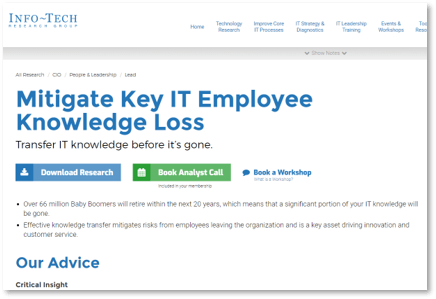
|
Knowledge transfer is complex and must be both multi-faceted and well supported
Knowledge transfer is the capture, organization, and distribution of knowledge held by individuals to ensure that it is accessible and usable by others.
| Knowledge transfer is not stopping, learning, and returning to work. Nor is it simply implementing a document management system. | Knowledge transfer is a wide range of methods that must be carefully selected and integrated into daily work in order to meet the needs of the knowledge to be transferred and the people involved. |
Knowledge transfer works best when the following techniques are applied
|
Personalization is the key.
Dwyer & Dwyer say that providing “insights to a particular person (or people) needing knowledge at the time of the requirement” is the difference between knowledge transfer that sticks and knowledge that is forgotten. |
| “Designing a system in which the employee must interrupt his or her work to learn or obtain new knowledge is not productive. Focus on ‘teachable moments.” (Karl Kapp, “Tools and Techniques for Transferring Know-How from Boomers to Gamers”) | |
Step 3.1
Identify Critical Knowledge to Transfer
The goal of this step is to understand what knowledge and skills much be transferred, keeping in mind the various types of knowledge.
Outcomes of this step
- Critical knowledge and skills for key roles documented in the Key Role Transition plans.
Knowledge Transfer
| Step 3.1 | Step 3.2 | Step 3.3 |
Understand what knowledge and skills must be transferred
There are two basic types of knowledge:
|
|
Step 3.2
Select Knowledge Transfer Methods
Activities
- 3.2.1 Select Knowledge Transfer Methods
This step helps you identify the knowledge transfer methods that will be the most effective, considering the knowledge or skill that needs to be transferred and the individuals involved.
Outcomes of this step
- Knowledge transfer methods chosen documented in the Key Role Transition Plans.
Knowledge Transfer
| Step 3.1 | Step 3.2 | Step 3.3 |
Knowledge transfer methods available
Be prepared to use various methods to transfer knowledge and use them all liberally.
| The most common knowledge transfer method is simply to have a collaborative culture
|
A basic willingness for a role incumbent to share with a successor is the most powerful item in your tacit knowledge transfer toolkit. Formal documentation is critical for explicit knowledge sharing, yet only 40% of organizations use it. Rewarding and recognizing employees for doing knowledge transfer well is underutilized yet has emerged as an important reinforcing component of any effective knowledge transfer program.
|
3.2.1 Select Knowledge Transfer Methods
Input: Role profiles, Talent profiles
Output: Methods for integrating knowledge transfer into day-to-day practice
Materials: Role Transition Plan Template
Participants: IT leadership/management team, HR, Knowledge source, Knowledge recipient
Utilize methods that make it easy to apply the knowledge in day-to-day practice.
Select your method according to the following criteria:
- The type of knowledge. A soft skill, like professionalism, is best taught via mentoring, while a technical process is best documented and applied on-the-job.
- What the knowledge recipient is comfortable with. The recipient may get bored during formal training sessions and retain more during job shadowing.
- What the knowledge source is comfortable with. The source may be uncomfortable with blogs and wikis, but comfortable with SharePoint.
- The cost. Some methods require an investment in time (e.g. mentoring), while others require an investment in technology (e.g. knowledge bases).
- The good news is that many supporting technologies may already exist in your organization or can be acquired for free.
- Methods that cost time may be difficult to get underway since employees may feel they don’t have the time or must change the way they work.
The more integrated knowledge transfer is in day-to-day activities, the more likely it is to be successful and the lower the time cost. This is because real learning is happening at the same time real work is being accomplished.
Document the knowledge transfer methods in the Role Transition Plan Template.
Explore alternative work arrangements
Ensure sufficient time to prepare successors
| If a key role incumbent isn’t around to complete knowledge transfer, it’s all for naught.
Alternative work arrangements are critical tools that employers can use to achieve a mutually beneficial solution that mitigates the risk of loss associated with key roles. Alternative work arrangements not only support employees who want to keep working, but they allow the business to retain employees that are needed in key roles. In a survey from The Conference Board, one out of four older workers indicated that they continue to work because their company provided them with needed flexibility. And, nearly half said that more flexibility would make them less likely to retire. (Source: Ivey Business Journal) |
Flexible work options are the most used form of alternative work arrangement
|
Choose the alternative work arrangement that works best for you and the employee
Alternative Work Arrangement |
Description |
Ideal Use |
Caveats |
| Flexible work options | Employees work the same number of hours but have flexibility in when and where they work (e.g. from home, evenings). | Employees who work fairly independently, with no or few direct reports. | Employee may become isolated or disconnected, impeding knowledge transfer methods that require interaction or one-on-one time. |
| Contract-based work | Working for a defined period of time on a specific project on a non-salaried or non-wage basis. | Project-oriented work that requires specialized knowledge or skills. | Available work may be sporadic or specific projects more intensive than the employee wants. Knowledge transfer must be built into the contractual arrangement. |
| Part-time roles | Half-days or a certain number of days per week; indefinite with no end date in mind. | Employees whose roles can be readily narrowed and upon whom people and critical processes are not dependent. | It may be difficult to break a traditionally full-time job down into a part-time role given the size and nature of associated tasks. |
| Graduated retirement | Retiring employee has a set retirement date, gradually reducing hours worked per week over time. | Roles where a successor has been identified and is available to work alongside the incumbent in an overlapping capacity while he or she learns. | The role may only require a single FTE, and the organization may not be able to afford the amount of redundancy inherent in this arrangement. |
The arrangement chosen may be a combination of multiple options
Alternative Work Arrangement | Description | Ideal Use | Caveats |
| Part-year jobs or job sharing | Working part of the year and having the rest of the year off, unpaid. | Project-oriented work where ongoing external relationships do not need to be maintained. | The employee is unavailable for knowledge transfer activities for a large portion of the year. Another risk is that the employee may opt not to return at the end of the extended time off, with little notice. |
| Increased paid time off | Additional vacation days upon reaching a certain age. | Best used as recognition or reward for long-term service. This may be a particularly useful retention incentive in organizations that do not offer pension plans. | The company may not be able to financially afford to pay for such extensive time off. If the role incumbent is the only one in the role, this may mean crucial work is not being done. |
| Altered roles | Concentration of a job description on fewer tasks that allows the employee to focus on his or her specific expertise. | Roles where a successor has been identified and is available to work alongside the incumbent, with the incumbent’s new role highly focused on mentoring. | The role may only require a single FTE, and the organization may not be able to afford the amount of redundancy inherent in this arrangement. |
Alternative work arrangements require senior management support
Senior management and other employees must see the value of retaining older workers, or they will not be supportive of these solutions.
| Any changes made to an employee’s work arrangement has an impact on people, processes, and policies.
If the knowledge and skills of older employees aren’t valued, then:
|
Alternate work arrangements can’t be implemented on a whim.
Make sure alternative work arrangements can be done right and are supported – they’re often solutions that come with additional work. Determine the effects and make appropriate adjustments.
|
Step 3.3
Document Role Transition Plans for all Key Roles
Activities
- 3.3.1 Document Role Transition Plans
The primary goal of this step is to build clear checklist-based plans for each key role to help ensure a smooth transition as a successor takes over.
Outcomes of this step
- Completed key role transition plans
Knowledge Transfer
| Step 3.1 | Step 3.2 | Step 3.3 |
3.3.1 Document Role Transition Plans
Input: Role profiles, Talent profiles, Talent assessments, Workforce plans
Output: A clear checklist-based plan to help ensure a smooth transition.
Materials: Role Transition Plan Template
Participants: IT leadership/management team, Incumbent, Successor(s), HR
Define a transition plan for all employees in at-risk key roles, and their successors.
You should already have a good idea of what knowledge and skills are valued from the worksheets completed earlier. Focus on identifying the knowledge, skills, and relationships essential to the specific incumbent in a key role and what it is they do to perform that key role well.
Using the Role Transition Plan Template develop a plan to transfer what needs to be transferred from the incumbent to the successor.
- Record the incumbent and successor information in the template.
- Summarize the key accountabilities and expectations of the incumbent’s role. This summary should highlight specific tasks and initiatives that the successor must take on, including success enablers. Attach the job description for a full description of accountabilities and expectations.
- Document the knowledge and skills requirements for the key role, as well as any additional knowledge and skills possessed by the key role incumbent that will aid the successor.
- Document any alternative work arrangements to the incumbent’s roles.
- Populate the Role Transition Checklist for key transition activities that must be completed by certain dates. A list of sample checklist items has been provided. Add, delete, or modify list items to suit your needs.
DairyNZ leverages alternative work arrangementsEnsures successful knowledge transfer |
INDUSTRY |
SOURCE |
Challenge
|
Solution
|
Results
|
Research Contributors and Experts
| Anne Roberts
Principal, Leadership Within Inc. al,
|
Amanda Mathieson
Senior Manager, Talent Management, Tangerine
|
Related Info-Tech Research
 |
Mitigate Key IT Employee Knowledge Loss
|
 |
Implement an IT Employee Development Plan
|
Bibliography
“Accommodating Older Workers’ Needs for Flexible Work Options.” Ivey Business Journal, July/August 2005. Accessed Jan 7, 2013.
Christensen, Kathleen and Marcie Pitt-Catsouphes. “Approaching 65: A Survey of Baby Boomers Turning 65 Years Old”. AARP, Dec. 2010.
Coyne, Kevin P. and Shawn T. Coyne. “The Baby Boomer Retirement Fallacy and What It Means to You. “ HBR Blog Network. Harvard Business Review, May 16, 2008. Accessed 8 Jan. 2013.
Dwyer, Kevin and Ngoc Luong Dwyer. “Managing the Baby Boomer Brain Drain: The Impact of Generational Change on Human Resource Management.” ChangeFactory, April 2010. Accessed Jan 9, 2013.
Gurchiek, Kathy. “Poll: Organizations Can Do More to Prepare for Talent Shortage as Boomers Retire.” SHRM, Nov 17, 2010. Accessed Jan 3, 2013.
Howden, Daniel. “What Is Time to Fill? KPIs for Recruiters.” Workable, 24 March 2016. Web.
Kapp, Karl M. “Tools and Techniques for Transferring Know-How from Boomers to Gamers.” Global Business and Organizational Excellence, July/August 2007. Web.
Piktialis, Diane and Kent A. Greenes. Bridging the Gaps: How to Transfer Knowledge in Today’s Multigenerational Workplace. The Conference Board, 2008.
Pisano, Gary P. “You need an Innovation Strategy.” Harvard Business Review, June 2015.
Vilet, Jacque. “Lost Knowledge – What Are You and Your Organization Doing About It?” TLNT, 25 April 2012. Accessed 5 Jan. 2013.
